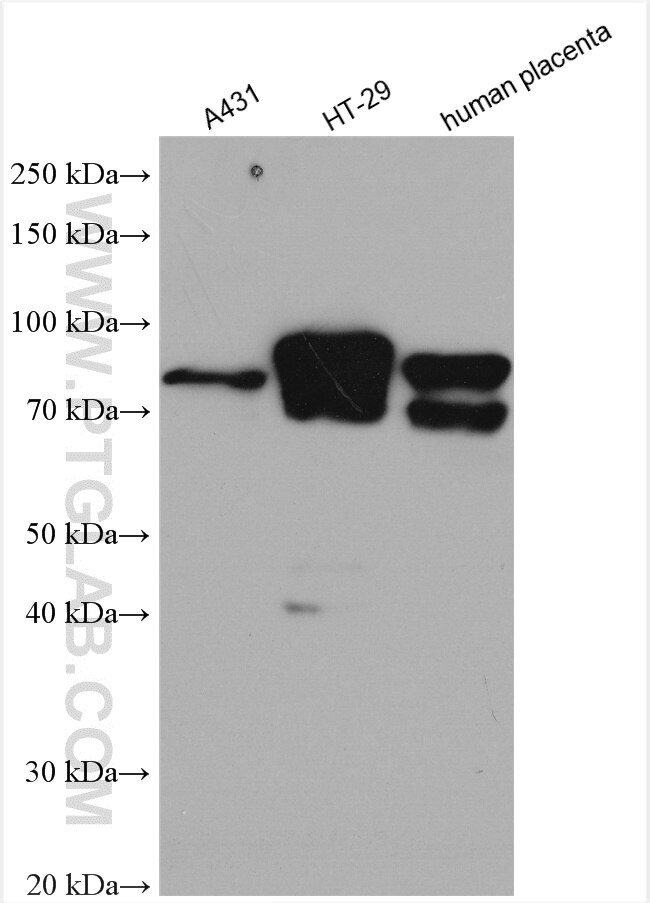BCAM Polyklonaler Antikörper
BCAM Polyklonal Antikörper für WB, ELISA
Wirt / Isotyp
Kaninchen / IgG
Getestete Reaktivität
human
Anwendung
WB, ELISA
Konjugation
Unkonjugiert
Kat-Nr. : 28222-1-AP
Synonyme
Galerie der Validierungsdaten
Geprüfte Anwendungen
| Erfolgreiche Detektion in WB | A431-Zellen, HT-29-Zellen, humanes Plazenta-Gewebe |
Empfohlene Verdünnung
| Anwendung | Verdünnung |
|---|---|
| Western Blot (WB) | WB : 1:1000-1:4000 |
| It is recommended that this reagent should be titrated in each testing system to obtain optimal results. | |
| Sample-dependent, check data in validation data gallery | |
Produktinformation
28222-1-AP bindet in WB, ELISA BCAM und zeigt Reaktivität mit human
| Getestete Reaktivität | human |
| Wirt / Isotyp | Kaninchen / IgG |
| Klonalität | Polyklonal |
| Typ | Antikörper |
| Immunogen | BCAM fusion protein Ag28181 |
| Vollständiger Name | basal cell adhesion molecule (Lutheran blood group) |
| Berechnetes Molekulargewicht | 67 kDa |
| Beobachtetes Molekulargewicht | 67-80 kDa |
| GenBank-Zugangsnummer | BC050450 |
| Gene symbol | BCAM |
| Gene ID (NCBI) | 4059 |
| Konjugation | Unkonjugiert |
| Form | Liquid |
| Reinigungsmethode | Antigen-Affinitätsreinigung |
| Lagerungspuffer | PBS mit 0.02% Natriumazid und 50% Glycerin pH 7.3. |
| Lagerungsbedingungen | Bei -20°C lagern. Nach dem Versand ein Jahr lang stabil Aliquotieren ist bei -20oC Lagerung nicht notwendig. 20ul Größen enthalten 0,1% BSA. |
Hintergrundinformationen
BCAM (Lutheran/basal cell-adhesion molecule, a glycoprotein) belongs to the immunoglobulin superfamily which contains both Lu blood group and BCAM tumor-associated antigens. The significance of Lu/BCAM on tumorigenesis has been increasingly recognized. Lu/BCAM is involved in cell-cell adhesion and migration in skin tumor (PMID: 11121140, PMID: 10728810). Proteomics analysis suggests that BCAM might be a potential biomarker for pancreatic cancer (PMID: 19199705).
Protokolle
| Produktspezifische Protokolle | |
|---|---|
| WB protocol for BCAM antibody 28222-1-AP | Protokoll herunterladen |
| Standard-Protokolle | |
|---|---|
| Klicken Sie hier, um unsere Standardprotokolle anzuzeigen |


